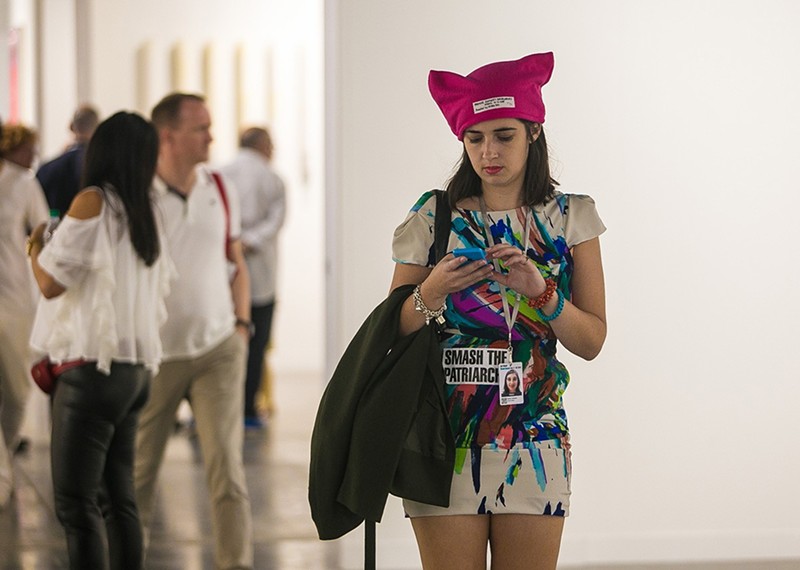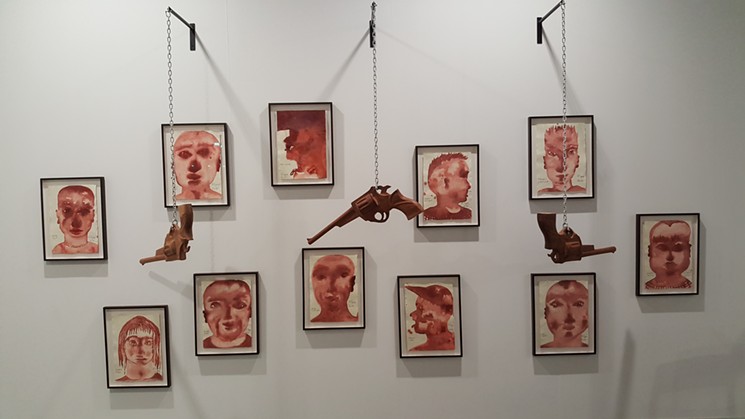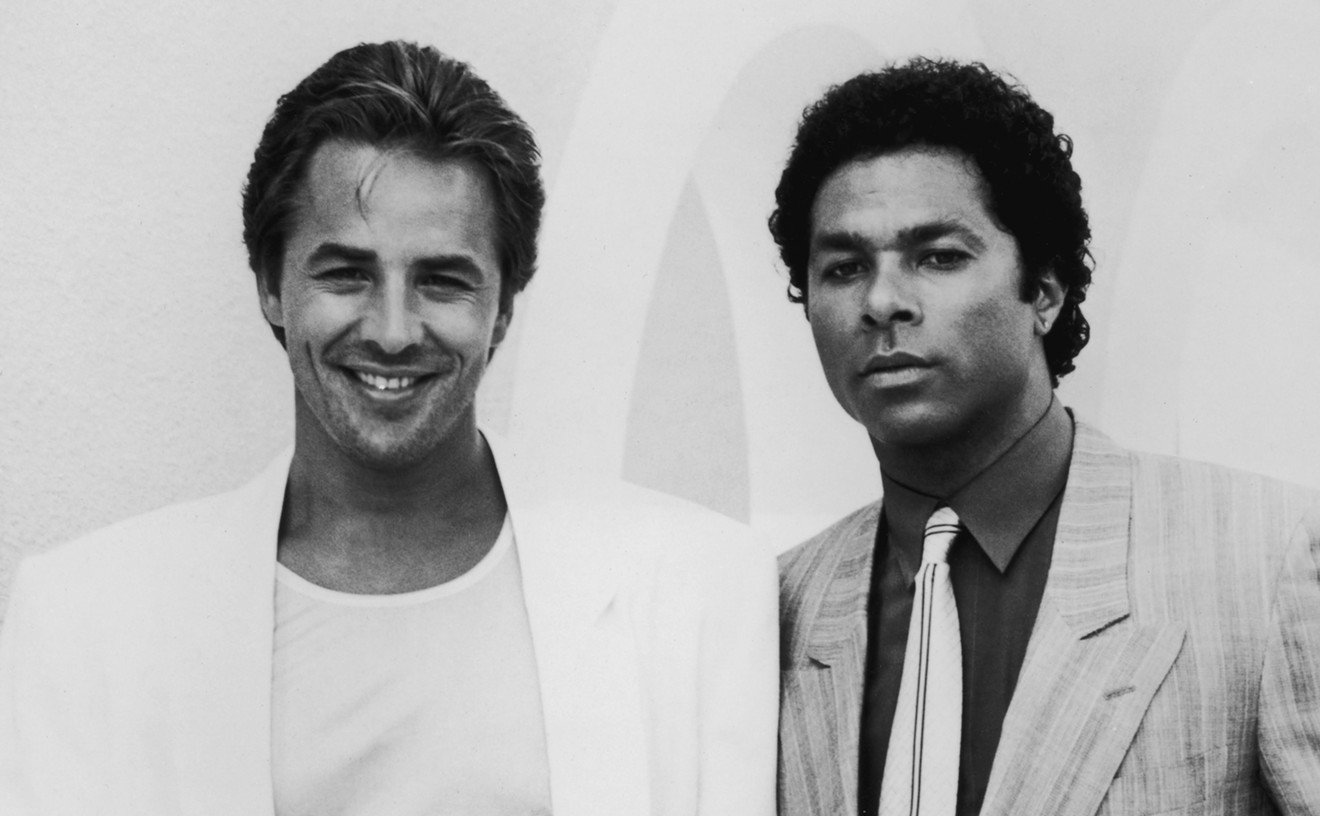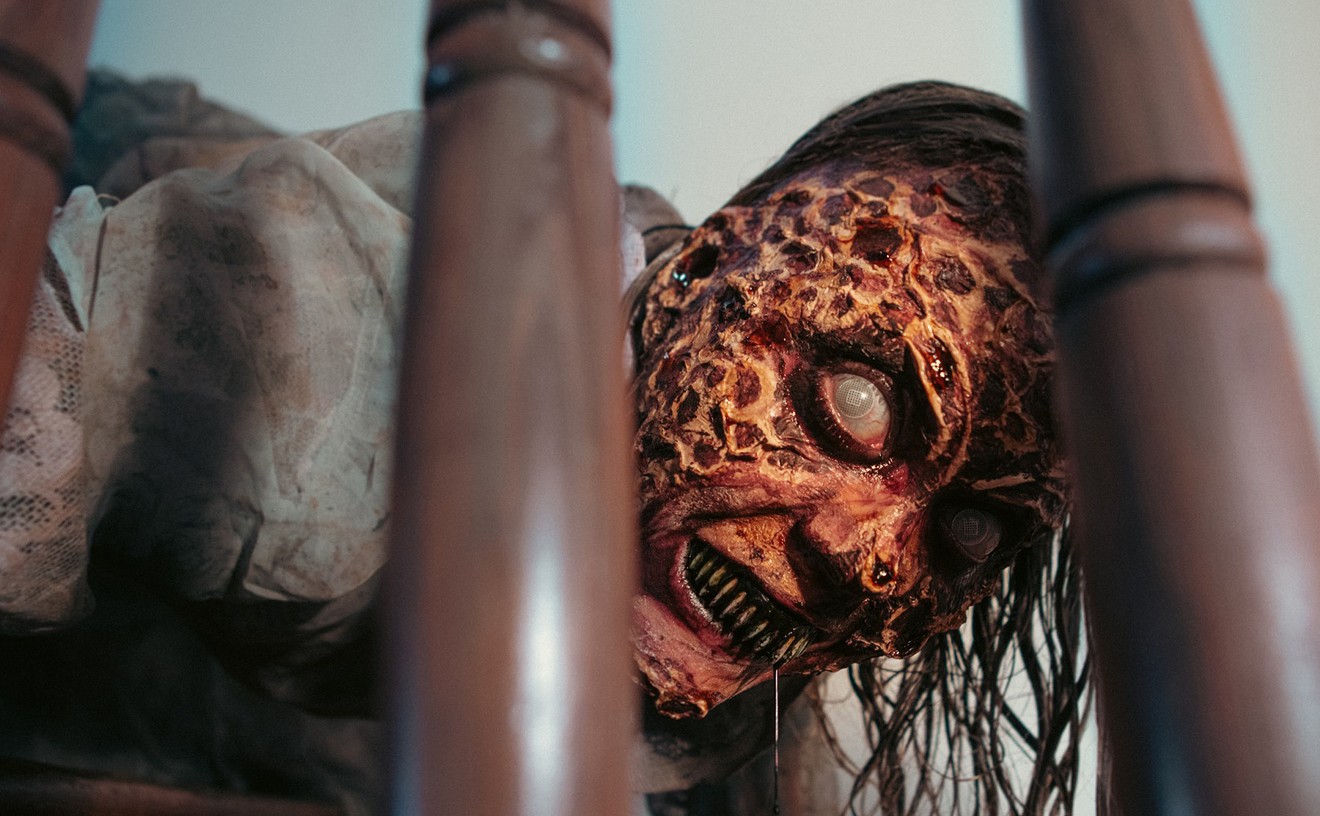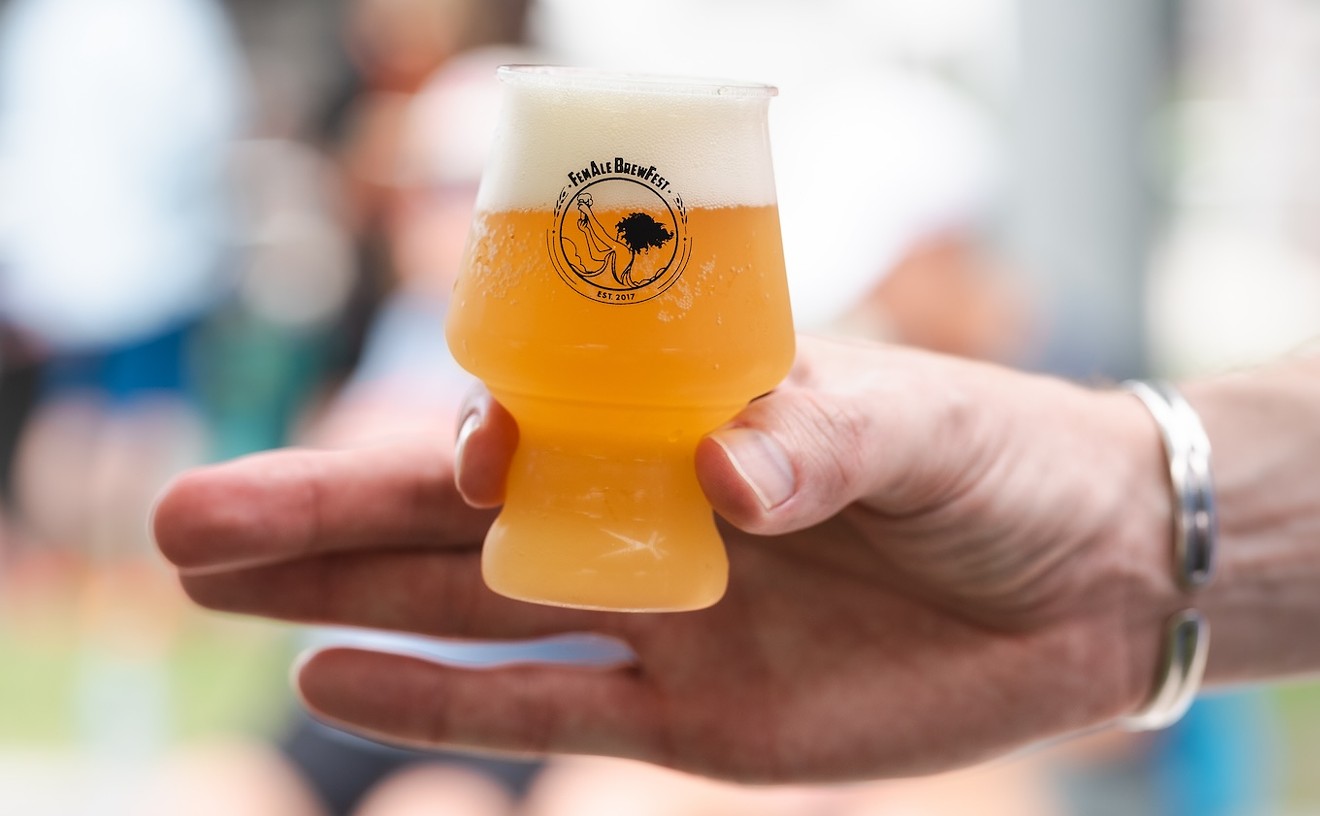Art Basel isn't known for skirting political commentary. The fair is arguably even a barometer for the levels of extremism to which contemporary art is willing to go at any given moment. Last year, for example, galleries reacted pointedly to the election of Donald Trump by making last-minute changes to works on display at the behest of artists and the public.
This year's edition is no different. Trump's literal face was not missed, whether in the work of Peter Saul or Manuel Ocampo. The grotesque caricatures have become so expected (and disturbingly accurate), however, that the edge is lost. Though the images provide some kind of reassurance that, yes, most humans agree the U.S. president is a genuine danger to society, the toupee-wearing alligator in Donald Trump in Florida still rings hollow. Saul and Ocampo are not the only artists using cartoonish methods to process the current political climate, and it all smacks a little of escapism.
As if mining for coping mechanisms, much of Basel consists of work directly from or in conversation with the past. The Box gallery presents Anthurium studies from Judith Bernstein, whose work was censored in the '70s for exploring the pitfalls of phallocentrism. However, it's mostly by association with Bernstein's larger oeuvre that the lively forms can be seen as politically charged. Andrea Bowers' works on reclaimed cardboard appropriate the past in an attempt to recall the feminist movement of the late 19th and early 20th Century. In her reimaginings of suffragette posters, the women and girls are painted variations of a creamy brown and advocate for trans-women's rights and female representatives. It's nostalgic in an unsettling sort of way, mainly because it feels naive in its attempt to repair the errors of feminism's less inclusive past.
These retrospectives get it right when the work is unsettling, though. In Latícia Parente's performative video, Preparação II, the artist injects herself with "vaccines" against racism, cultural colonialism, and the mystification of politics and art. The Brazilian artist is then shown writing each vaccination onto a visa form. The DC Moore gallery's display of work by David Driskell recalls the Afrocentric movement of the late '60s and early '70s in a way that is as relevant as it is revelatory. Works such as Of Thee I Weep are almost painful in their contemporaneity despite having been made almost 50 years ago. The soul of works such as Woman With Flowers prevents the parallels from becoming too heavy-handed.
It's this type of soul, more so than recognizable commentary, that ultimately speaks to the viewer, although the message is often layered. Rirkrit Tiravanjia's Untitled 2014 (Come Together), for example, obscures a message of hope over clippings covering Barack Obama's second inauguration. The letters are so densely layered over the newspaper pages that the message is barely discernible, yet images between the thick lines of the letters seem to ground the viewer in the power of that moment. Across the same exhibition space, the New York gallery Gavin Brown's Enterprise displays LaToya Ruby Frazier's photographs, a meditative and warm gaze into the intimacy of black family life.
Some overtly political work that straddles both soul and commentary is Barthelemy Toguo's Black Lives Matter. The series of portraits bear familiar names, yet the faces are vague, almost watered down, as if to avoid the sharpness of that trauma all over again. Betty Tompkins' series Women Words simultaneously obscures and defines female figures in classical art and photography by filling their silhouettes with slurs, names, and definitions on a scale that is small enough to feel like selections from a family album. The women become abstract both by our focus on the overlay and the prevalence of the stereotypes that cover them.
But the most successful pieces at Basel use this abstraction as an opening to heal. This healing becomes not only necessary but also inherently transgressive. Lenore Tawney's Shield is a delicately woven structure that seems to speak to the strength we rarely expect or give credence to — and is diametrically opposed to the macho bravado that got Trump elected. Works such as Teresa Margolles' La Gran America and Guillermo Galindo's Braille Forensic Cortex, which explore the deadly journey to cross the U.S.-Mexico border discreetly, are surprising and poignant in their approach to honoring the dead. The blocks and marks hardly reduce the lives they represent, but rather imbue them with a newness that allows that grief to be approachable.
Tucked away from the main drag is perhaps the softest and most dissentious work of the whole fair. It's Alice Attie's series inspired by Michel Foucault's final lectures, in which the ailing philosopher meditated on Socrates' last words: "Take care of yourself." Attie brings this phrase to such a degree of repetition that the letters become forms skirting along the large pages in various light hues. The lines are thin and fragile, but the forms are almost ecstatic. The artist explores other means and forms of repetition, sometimes lettered, sometimes with accompanying photographs, but all eager to find rest. In a world that's struggling to demand reparations, find solutions, and challenge long-standing paradigms, this simple reminder could be the most politically radical statement of all.
Art Basel Miami Beach 2017. Thursday, December 7, through Sunday, December 10, at the Miami Beach Convention Center, 1901 Convention Center Dr., Miami Beach; artbasel.com. Tickets cost $50 to $130.

Audio By Carbonatix
[
{
"name": "Air - MediumRectangle - Inline Content - Mobile Display Size",
"component": "19274298",
"insertPoint": "2",
"requiredCountToDisplay": "2",
"watchElement": ".fdn-content-body",
"astAdList": [
{
"adType": "rectangle",
"displayTargets": "mobile"
}
]
},{
"name": "Editor Picks",
"component": "17482312",
"insertPoint": "4",
"requiredCountToDisplay": "1",
"watchElement": ".fdn-content-body",
"astAdList": [
{
"adType": "rectangle",
"displayTargets": "desktop|tablet"
},{
"adType": "rectangle",
"displayTargets": "desktop|tablet|mobile"
}
]
},{
"name": "Inline Links",
"component": "18711090",
"insertPoint": "8th",
"startingPoint": 8,
"requiredCountToDisplay": "7",
"maxInsertions": 25
},{
"name": "Air - MediumRectangle - Combo - Inline Content",
"component": "17482310",
"insertPoint": "8th",
"startingPoint": 8,
"requiredCountToDisplay": "7",
"maxInsertions": 25,
"watchElement": ".fdn-content-body",
"astAdList": [
{
"adType": "rectangle",
"displayTargets": "desktop|tablet"
},{
"adType": "rectangle",
"displayTargets": "desktop|tablet|mobile"
}
]
},{
"name": "Inline Links",
"component": "18711090",
"insertPoint": "8th",
"startingPoint": 12,
"requiredCountToDisplay": "11",
"maxInsertions": 25
},{
"name": "Air - Leaderboard Tower - Combo - Inline Content",
"component": "17482313",
"insertPoint": "8th",
"startingPoint": 12,
"requiredCountToDisplay": "12",
"maxInsertions": 25,
"watchElement": ".fdn-content-body",
"astAdList": [
{
"adType": "leaderboardInlineContent",
"displayTargets": "desktop|tablet"
},{
"adType": "tower",
"displayTargets": "mobile"
}
]
}
]

